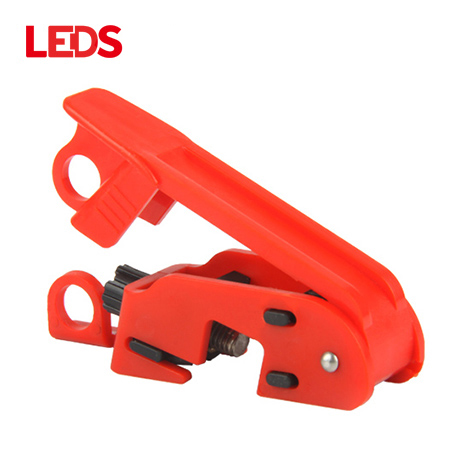-

Grip Tight Circuit Breaker Lockout
Grip Tight Circuit Breaker Lockout Overview Master Lock 493B Use Method Use a simple thumb rotation to adjust the screw to the breaker handle, then close the clamp handle so that you can hold o... -

277 Volt Clamp-On Circuit Breaker Lockout
277 Volt Clamp-On Circuit Breaker Lockout Overview Circuit breaker can be used to distribute electricity and manage the plant’s power supply. When the equipment in the factory is in normal...
Breaker Lockout Device Feature
- 1. Complete circuit breaker lockout manufacturer: provide the best safety for all workplaces requiring circuit breaker locking.
- 2. Minimal "toolless" option: Allows breaker lockout device to be locked in the off position without the use of tools, providing fast and easy installation.
- 3. Industry-leading clamping force: Prevents re-opening of the circuit breaker for maintenance or service safety.
- 4. General design: equipped with single-pole and multi-pole circuit breakers, most of the circuit breakers in the equipment can be locked effectively.
- 5. Rugged reinforced nylon and stainless steel/copper structure: provides strength, durability, added safety and corrosion resistance; Ideal for industrial and harsh environment applications.
- 6. Compact and light: convenient, easy to carry and store in a small lock bag.
Circuit Breaker Lockout Usage And Lockout Program
- 1. Get ready to shut down
- Determine the type and intensity of the hazardous energy to be controlled and lock all isolation points and energy isolation devices; Obtain safety padlocks, lockout tags, breaker lockout device and other equipment necessary to complete the work.
- 2. Turn off the device
- Notify all affected employees to shut down and shut down equipment in accordance with normal shutdown procedures. (e.g. On/off or start/stop buttons or switches).
- 3. Isolation
- Operate circuit breaker lockout to isolate the machine or equipment from energy. This usually involves opening an open switch, circuit breaker, or valve in a closed state; Caution: Do not turn on the off switch without turning off the device, as it may cause an arc or explosion.
- 4. Use lockout/tagout devices
- Safety padlocks and lockout tags on each energy isolation device to ensure that it is closed; When the energy isolation device requires a locking device, install the breaker lockout device, safety padlock, and signage to ensure that it is in the "off" state.
- 5. Blackout: Release or suppression of stored energy
- After the use of the locking device, all stored or residual energy must be released, disconnected, restricted or otherwise made safe.
- 6. Verify
- Before starting any work, verify that the machine or device is isolated and cannot be activated or restarted by manually operating the control button or switch to start or operate the machine or device and return control to their closed or neutral position.
- 7. Unlock
- Ensure that all non-essential equipment or components have been removed from the machine and that the machine is in good condition for safe operation; Restart the machine or device.



